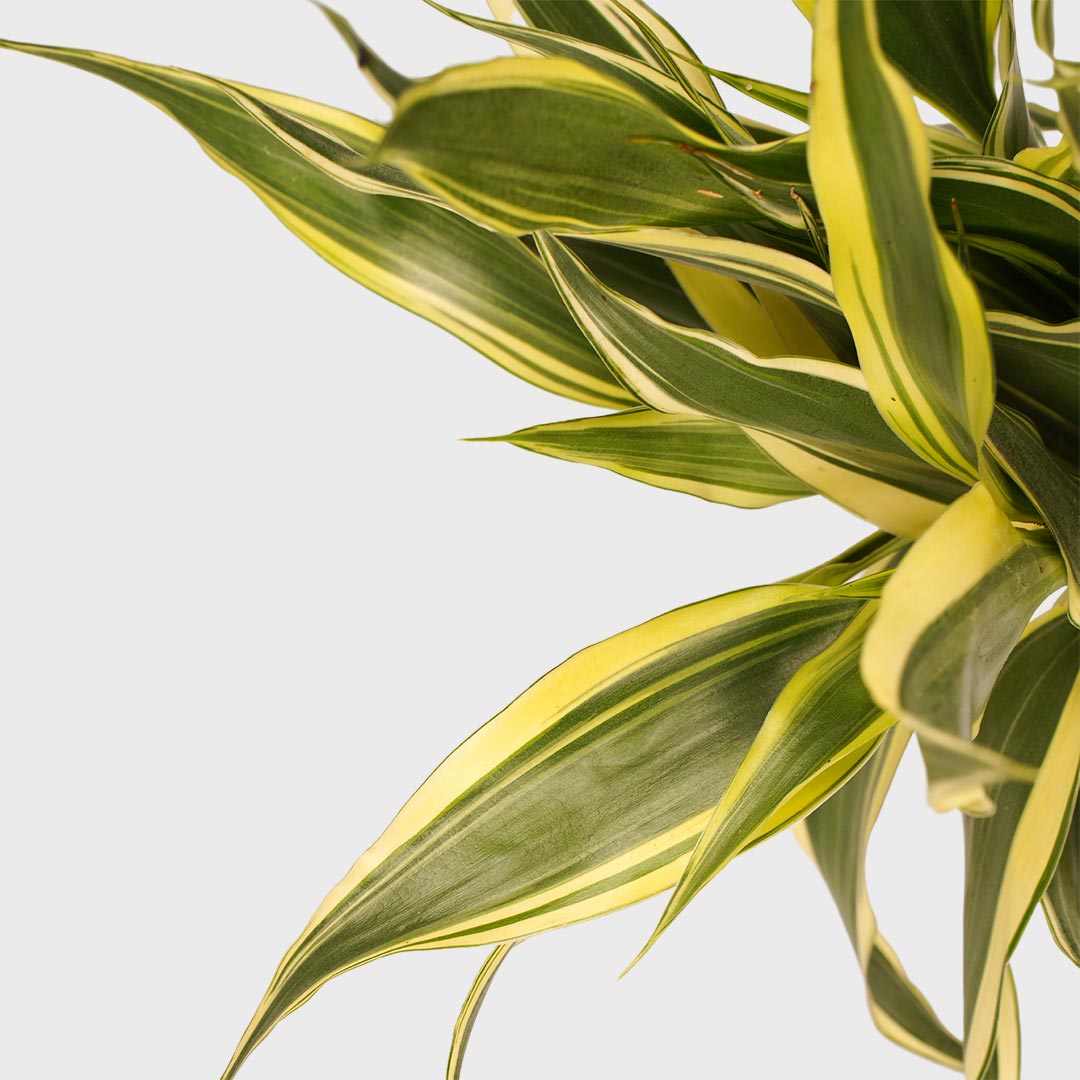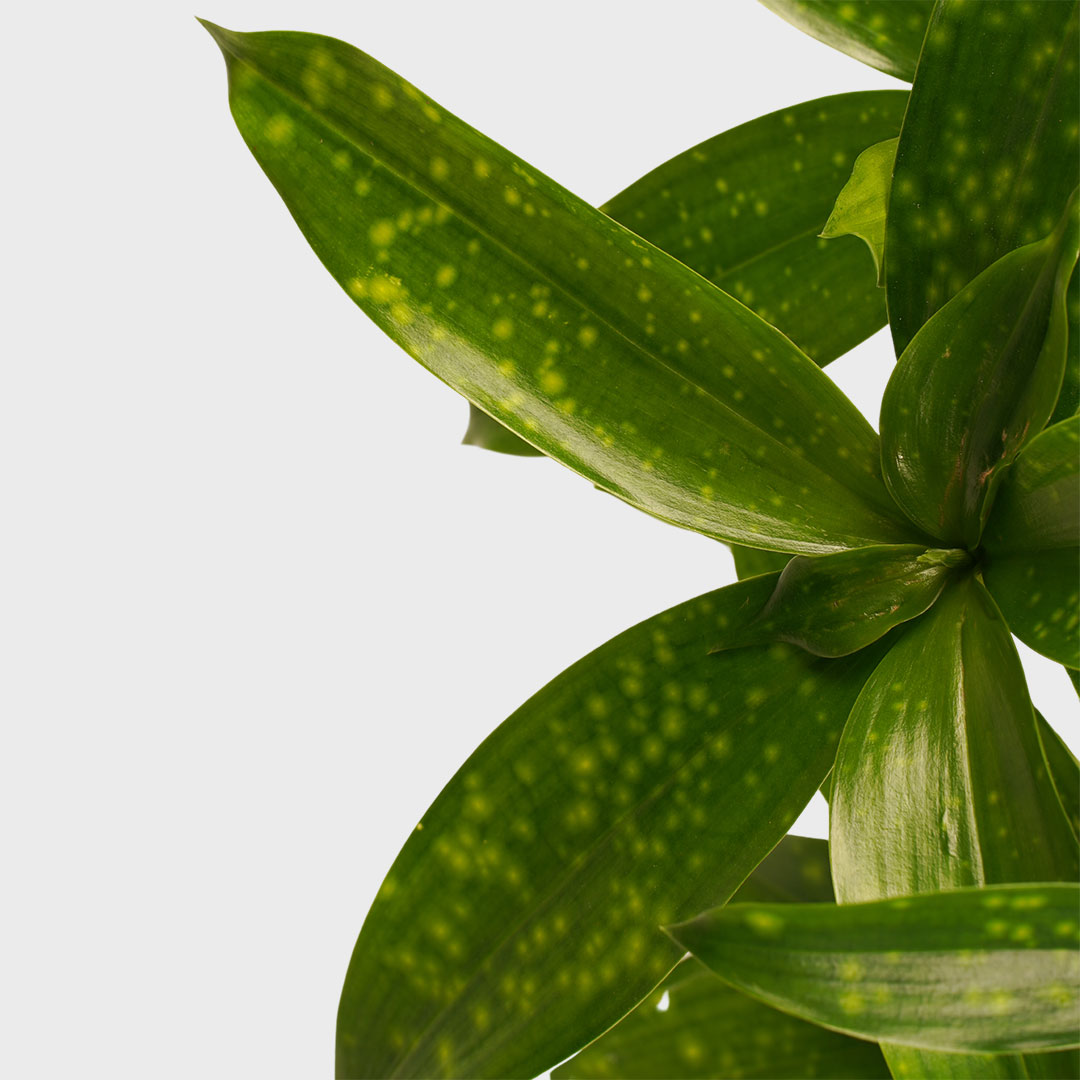
Deliver to
Luxembourg
 English
EnglishThe Dracaena is popular as an indoor plant characterized by long and slim leaves with coloured edges. Dracaena plants can deal with some neglect, making it fairly straightforward and simple to take care of. Due to the tough nature of this plant, the Dracaena, also known as the 'Dragon Tree' is perfect for any beginner.


Medium light
Water every 2 weeks
Toxic
Air-purifying
The Dracaena thrives best with indirect sunlight to partial shade. Place it somewhere where direct sunlight does not hit this indoor plant as this can burn its leaves. If it is placed in a room with less light, it will still survive. When the Dracaena is positioned in a place with a lot of partial shade, the plant will feel fine, but will slow down in growth.
Before watering the Dracaena check if the soil feels dry. The plant only needs water if the soil is dried out first. Overwatering can cause the plant to grow fungus or make the roots start to rot.
If possible use distilled water or filtered water for the Dracaena. The minerals and salts in unfiltered water or tap water can cause the tips of the leaves to turn brown.
The Dracaena doesn't use a lot of energy. However, the plant likes extra nutrients in the growing season. You can provide these nutrients by plant nutrition. We recommend giving plant nutrition once every month. From spring until autumn. After autumn and in winter it is better not to give extra nutrients. In the winter, plant nutrition can actually be harmful for the Dracaena!
Repotting the Dracaena isn't necessary every year. The plant is a slow grower. We recommend repotting the Dracaena every 2 years. Repotting gives the plant new nutrients and more room for root growth. The airier soil is also very good for the water flowing through. The best period to repot is spring.
Dracaena plants have a wide range of species and cultivars, each with slightly different preferences. However, most Dracaena plants thrive in average room temperatures that are comfortable for humans, ranging between 18 to 24 degrees Celsius.
Pruning a Dracaena plant is not a necessary task for its overall health and growth. These plants typically have a slow to moderate growth rate and can maintain their shape and appearance without regular pruning.
If the air is too dry, the Dracaena can suffer from spider mites. To prevent spider mites, it is best to use the plant sprayer once a week. Spider mites are an infection of mites on plants. You can recognise the infection by infected leaves and a kind of cobwebs. If you have come across spider mites, it is best to place the plant outside. Wind and moisture from outside will quickly keep the spider mite away.


Yellow leaves can have different causes. The leaves of the Dracaena can turn yellow because of too much light. However, this doesn't happen very often. The most common reason for yellow leaves on Dracaena is too much water.
If the leaves of the Dracaena turn yellow and even droop, this is caused by too much water. Let the soil dry out before watering the plant again. It is wise to check if there is no stem- or root rot.
The leaves of a Dracaena usually curl because they are dehydrated. In this case, give it a little more water in the coming period.
In nature Dracaenas can grow to a height of 12 metres. As an indoor plant, the plant will not reach this height, but 3 metres should be possible.
Yes, you certainly can. Check out our tips on how to propagate the Dracaena.